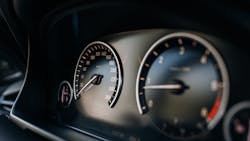Is there a difference between a car that's quick and a car that's fast?
I pondered this as I read a recent article in Popular Mechanics about the history of acceleration. The piece, "Extreme Acceleration is the New Traffic Safety Frontier," chronicles the sluggish early vehicles giving way to muscle cars, only to be curtailed by stricter emissions regulations. The '90s helped to return some power to everyday cars, thanks to new technology like electronic fuel injection and turbochargers.
My first car was a 1994 Ford Ranger, the 2WD version with the four-cylinder. I can attest that the advances in horsepower did not do much for that vehicle. And trust me, I tried.
One last tidbit from that article: Consider the popular Toyota Camry. The 1985 Camry's 90 horsepower had to pull 25 pounds of car per horsepower. The 2022 Camry is heavier, but a more powerful standard engine means each horsepower only needs to pull 12 pounds of car.
All that has me thinking about severe driving. I wrote about this back in 2019 in an article exploring why the "severe" driving habits outlined in owner's manuals probably apply to more drivers than you'd suspect. This is probably related to the fact that the average car today has the ability to accelerate more quickly and zip around on high-tech tires and brake more quickly on four standard disc brakes.
Severe driving might be of interest to you, the shop owner, because it can mean shorter drain intervals. In some cases, the interval can be cut in half. Driving in stop-and-go traffic, taking multiple short trips, and extensive idling can all contribute to "severe" conditions. Sharp acceleration could qualify as well.
Shop technicians can parse out these details by speaking with customers and recommending the right service for their driving style. The suggestions may differ from the regular mileage indicator that most shops rely on. After all, running a successful shop starts by understanding the customer base.
That last phrase just so happens to be the teaser for this month's feature story, "Committed to Customers." The article started with a simple premise: Ask shop owners to talk about their customers. Through that process, we learned how these shop owners approach customer service, what they learn from their conversations, and how they tailor their businesses to those drivers.
This month's profile covers Joe Benza, who ran Fast Lube Plus for years before selling to FullSpeed Automotive. But then he found the right opportunity and got back into the quick maintenance business, with a really sharp shop in the process. Joe sets a great example for shop owners, and it is great to feature that story this summer.
I know I don't have to tell you to keep engaging with customers. You're already doing it all day. But perhaps this summer is a good chance to start thinking about different conversations you can have with them that might open up new service opportunities. Thanks for reading.






